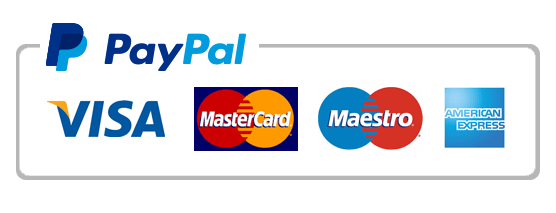Currently Empty: £0.00

The healthcare industry is evolving rapidly, and one of the most significant transformations is how healthcare professionals are trained. Traditional methods of in-person training have long been the norm in the sector, but e-learning is now disrupting this model and providing a more flexible, cost-effective, and scalable approach to healthcare education. This blog will explore how e-learning is revolutionizing healthcare training, its key benefits, technological innovations driving it, and its impact on healthcare outcomes.
Introduction
As the demand for healthcare professionals continues to grow, so does the need for effective, efficient, and accessible training methods. Traditional healthcare education methods, such as classroom-based learning and in-person training, often face challenges like high costs, limited reach, and time constraints. Enter e-learning: a revolutionary approach to healthcare training that is not only overcoming these challenges but also enhancing the quality of healthcare education worldwide.
In this blog, we’ll explore how e-learning is transforming the healthcare sector, the benefits it offers, and its potential for improving patient care, training efficiency, and ongoing professional development.
The Challenges of Traditional Healthcare Training
The healthcare sector has long relied on traditional methods of training healthcare workers. These typically involve in-person training, lectures, seminars, and hands-on workshops, all of which present several challenges:
High Costs
In-person training can be expensive for both institutions and individuals. The costs include hiring trainers, renting venues, providing materials, and sometimes offering travel and accommodation for participants. These expenses can make healthcare training programs out of reach for some institutions and professionals, especially those in remote areas or smaller healthcare setups.
Limited Access and Time Constraints
Traditional healthcare training often requires healthcare workers to leave their day-to-day responsibilities to attend training sessions. For professionals working in hospitals, clinics, and emergency care, finding time to attend in-person training can be incredibly challenging. Additionally, workers in rural or underserved areas may have limited access to in-person education due to geographic barriers.
Static Content and Limited Flexibility
Classroom-based training often uses static materials, and the pace of learning is dictated by the instructor. This lack of flexibility can hinder personalized learning and prevent individuals from absorbing content at their own pace. For complex healthcare topics, this can result in knowledge gaps, especially if workers are unable to revisit training content once the course has concluded.
These challenges highlight the need for a more dynamic, cost-effective, and accessible solution—enter e-learning.
E-Learning: The Game Changer in Healthcare Education
E-learning is transforming healthcare training by offering an innovative and flexible way to deliver education to healthcare workers. Below are some of the key reasons why e-learning is a game changer in healthcare education.
Flexibility and Accessibility
One of the most significant advantages of e-learning in healthcare is flexibility. Healthcare professionals can access training modules at any time, from anywhere, without the need to be physically present in a classroom. This flexibility is particularly crucial for those working in busy hospitals or remote locations where taking time off for in-person training can be challenging.
E-learning also makes healthcare education more accessible for workers worldwide. With just an internet connection, healthcare professionals in rural or underserved areas can access high-quality training, improving their knowledge and skills.
Cost-Effectiveness
E-learning is a cost-effective solution compared to traditional methods. Since e-learning eliminates the need for physical venues, travel, and in-person trainers, it reduces the overall cost of healthcare training. Healthcare institutions can also offer training to a larger number of employees without additional costs, making it an efficient and scalable solution.
Scalability
E-learning platforms can accommodate hundreds or thousands of learners simultaneously, making it easy to scale healthcare training programs. This scalability is particularly beneficial for organizations that need to train large groups of healthcare professionals, such as hospitals or health systems, ensuring consistent quality across all levels of staff.
Key Benefits of E-Learning in Healthcare
E-learning in healthcare training provides numerous benefits that make it an attractive option for both healthcare institutions and professionals. Below are some of the most impactful advantages:
Personalized Learning
E-learning allows healthcare professionals to learn at their own pace. Unlike classroom-based training, where everyone follows the same timeline, e-learning can be tailored to individual learning styles. Professionals can spend more time on challenging topics and move through familiar content more quickly. This personalized approach increases knowledge retention and ensures that workers are confident in their abilities.
Simulation and Virtual Labs
One of the most exciting aspects of e-learning in healthcare is the use of simulations and virtual labs. Advanced e-learning platforms can replicate real-world healthcare scenarios, such as patient care simulations, where learners can practice medical procedures in a risk-free environment. These virtual labs allow healthcare professionals to hone their skills without the pressure of working with real patients, ensuring they are well-prepared for real-life situations.
Continuous Learning
Healthcare is an ever-evolving field, and e-learning enables professionals to engage in continuous learning. Many e-learning platforms offer microlearning, where learners can access short, focused lessons to stay up-to-date with the latest developments in their field. Additionally, healthcare professionals can earn Continuing Professional Development (CPD) credits for participating in e-learning courses, ensuring they maintain the required certifications and stay current with industry standards.
How E-Learning Improves Healthcare Outcomes
The effectiveness of healthcare training directly influences patient care and overall healthcare outcomes. E-learning is not just transforming how healthcare professionals learn but is also having a measurable impact on the quality of care patients receive.
Better Trained Healthcare Workers
By providing flexible and scalable learning opportunities, e-learning ensures that healthcare workers acquire the necessary knowledge and skills to deliver the best care possible. With immersive simulations, personalized learning, and continuous education, e-learning enhances healthcare workers’ ability to make informed decisions and improve patient outcomes.
Faster Onboarding and Skills Development
E-learning significantly reduces the time required for onboarding new employees and training existing staff. New healthcare workers can complete essential training online before starting their roles, allowing them to hit the ground running. Additionally, e-learning platforms allow healthcare workers to quickly acquire new skills and knowledge as medical practices evolve.
Improved Patient Care
The ultimate goal of healthcare training is to improve patient care, and e-learning contributes to this by ensuring that healthcare professionals are better equipped to handle the complexities of their jobs. Well-trained professionals can provide more accurate diagnoses, offer better patient communication, and deliver more effective treatments, all of which result in improved patient outcomes.
Technological Innovations Driving E-Learning in Healthcare
The integration of cutting-edge technology is what makes e-learning in healthcare so impactful. Below are some of the key technological innovations driving e-learning in healthcare.
Virtual Reality (VR) and Augmented Reality (AR)
Virtual and augmented reality are revolutionizing healthcare training by providing immersive, hands-on experiences without the risk of harming patients. VR and AR allow healthcare professionals to practice complex procedures, such as surgeries, in a controlled, simulated environment. These technologies also help in educating healthcare workers on anatomy and medical conditions in a more interactive and engaging manner.
Mobile Learning
With the rise of smartphones and tablets, mobile learning has become an integral part of e-learning in healthcare. Mobile learning allows healthcare professionals to access training modules on-the-go, enabling them to complete courses during downtime or between shifts. This accessibility ensures that healthcare professionals can continue their education without sacrificing their work responsibilities.
AI and Adaptive Learning
Artificial intelligence (AI) is being integrated into e-learning platforms to provide personalized learning experiences. Adaptive learning systems use AI to adjust content based on the learner’s progress and performance, ensuring that healthcare workers receive targeted support when needed. AI-driven learning platforms can also analyze learner data to identify areas where workers need additional training, further enhancing the learning experience.
Case Studies: Success Stories of E-Learning in Healthcare
Several healthcare institutions and organizations have successfully implemented e-learning programs to enhance training and improve outcomes. Let’s explore two real-world examples:
Example 1: A Hospital Training System
A large hospital network implemented an e-learning system to train its medical and nursing staff. The system included a combination of online courses, virtual simulations, and assessments to improve clinical skills and enhance patient care. As a result, the hospital reported a decrease in medical errors and an increase in overall patient satisfaction, proving the effectiveness of e-learning in healthcare.
Example 2: National Healthcare E-Learning Platform
A national health service introduced an e-learning platform that provided healthcare professionals with access to CPD courses. The platform reached thousands of healthcare workers across the country, offering continuous education and professional development opportunities. Feedback from participants indicated a high level of satisfaction, and the platform was credited with improving the quality of care provided by healthcare professionals nationwide.
Overcoming Barriers to E-Learning in Healthcare
While e-learning has many benefits, there are still barriers that need to be addressed:
Technological Barriers
Some healthcare professionals, particularly those in remote areas, may lack access to reliable internet connections or the necessary devices to participate in e-learning. Healthcare institutions need to invest in technology and infrastructure to ensure that all staff members can benefit from online education.
Resistance to Change
Some healthcare professionals may be resistant to adopting e-learning due to unfamiliarity with the technology or skepticism about its effectiveness. Institutions can address this by providing adequate training on how to use e-learning platforms and demonstrating the positive impact on patient care and professional development.
Solution-Oriented Strategies
To overcome these barriers, healthcare institutions can adopt hybrid models that combine in-person training with e-learning, ensuring that employees have access to both in-person mentorship and online courses. Additionally, offering technical support and flexible learning options can help make e-learning more accessible and user-friendly.
The Future of E-Learning in Healthcare Training
The future of e-learning in healthcare is bright. With the increasing integration of AI, VR, and mobile learning, healthcare training will become even more personalized, accessible, and engaging. As technology continues to advance, the potential for e-learning to improve patient outcomes and enhance professional development will only grow. Healthcare institutions worldwide will continue to adopt e-learning as a crucial tool for training the next generation of healthcare professionals.
Conclusion
E-learning is undoubtedly revolutionizing healthcare training. By providing flexible, cost-effective, and scalable education, e-learning ensures that healthcare professionals have the knowledge and skills they need to improve patient outcomes and deliver high-quality care. With continuous advancements in technology and increasing adoption across healthcare sectors, e-learning is set to shape the future of healthcare training for years to come.





